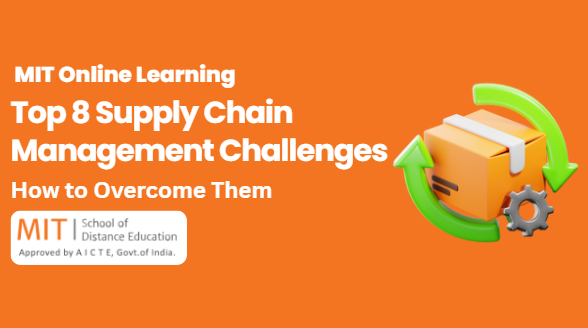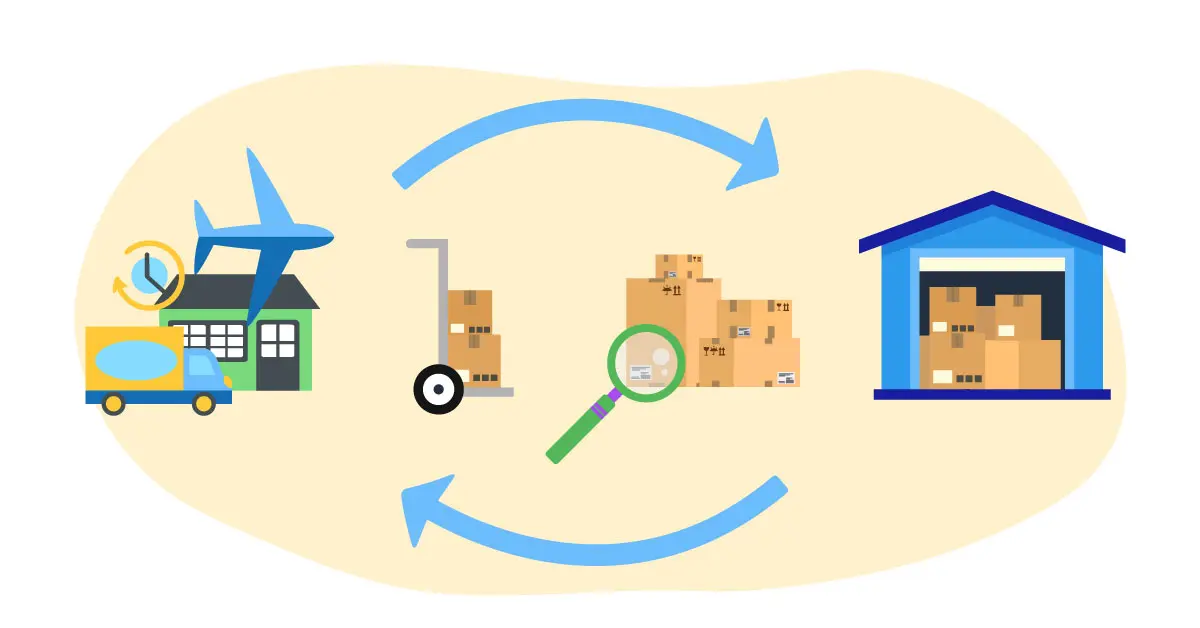
In today’s fast-paced and digitally driven market landscape, Supply Chain Management (SCM) is no longer just a backend function. It’s the heartbeat of modern business operations—impacting everything from customer satisfaction and inventory optimization to logistics optimization and e-commerce fulfillment. However, as global trade expands and consumer expectations rise, supply chains are becoming more complex and vulnerable to disruptions.
To ensure resilience and growth, it is crucial for everyone working in logistics, aspiring management, or owning a firm to comprehend the key supply chain challenges and how to address them. Let’s examine the top 5 supply chain management challenges and the best ways to get beyond them.

1. Inaccurate Consumer Demand Forecasting
The Problem:
Modern consumers are unpredictable. With trends changing rapidly and markets fluctuating due to economic, political, and even environmental factors, consumer demand forecasting has become a significant challenge. Overestimating demand leads to overstocking, while underestimating causes stockouts—both hurting revenue and customer satisfaction.
Impact:
- Poor manufacturing planning
- Wasted resource allocation
- Loss of market competitiveness
- Inefficient inventory management
Solution:
✅ Implement advanced demand prediction tools powered by AI and machine learning
✅ Analyze historical sales data, market trends, and seasonal behavior
✅ Integrate marketing, sales, and supply chain teams to align demand and supply
✅ Utilize integrated supply chain solutions that offer real-time data access
Example Strategy:
Companies like Amazon use AI-driven forecasting tools to anticipate customer needs even before orders are placed, helping them maintain agile e-commerce fulfillment.
2. Inefficient Inventory Management and Stock Visibility
The Problem:
Stock shortages and excesses continue to be problems for supply systems. Conventional approaches frequently lack flexibility and real-time visibility, which results in poor inventory management.
Impact:
- Increased holding costs
- Decreased operational efficiency
- Risk of obsolete inventory
- Lack of transparency across the supply chain strategy
Solution:
✅ Adopt cloud-based inventory optimization systems
✅ Leverage IoT sensors and RFID for real-time tracking
✅ Establish reorder point alerts based on live data
✅ Develop a centralized dashboard for stock monitoring across all nodes
Example Strategy:
Retailers that implement real-time inventory systems reduce holding costs by up to 20% while improving service levels.
3. Complex Order Fulfillment and Omnichannel Demands
The Problem:
With the rise of omnichannel fulfillment, customers expect seamless order experiences whether they shop online, via mobile, or in-store. Managing order fulfillment across multiple channels while ensuring speed and accuracy is a top logistical nightmare.
Impact:
- Delivery delays
- Split shipments and increased shipping costs
- Customer dissatisfaction
- Low logistics optimization
Solution:
✅ Develop a unified commerce strategy integrating all sales channels
✅ Invest in intelligent e-commerce fulfillment systems
✅ Partner with 3PLs for agile logistics support
✅ Utilize automation in warehousing and picking operations
Example Strategy:
Zara, the fashion retailer, uses centralized inventory for both online and offline channels to deliver faster and reduce missed sales opportunities.
4. Ineffective Returns Management and Reverse Logistics

The Problem:
Returns are unavoidable, particularly in industries like electronics and fashion. On the other hand, subpar reverse logistics and returns management can hurt revenue and diminish customer loyalty.
Impact:
- High cost of processing returns
- Inventory write-offs
- Environmental waste
- Poor customer satisfaction
Solution:
✅ Build a clear and hassle-free returns policy
✅ Use data analytics for returns optimization (e.g., identify frequent return reasons)
✅ Refurbish returned items for resale where possible
✅ Automate return processing to reduce handling time and errors
Example Strategy:
Brands like Apple refurbish returned devices and resell them as certified products, reducing waste and regaining costs.
5. Lack of Supply Chain Integration and Agility
The Problem:
Disjointed systems, outdated technology, and siloed departments cause supply chains to become sluggish and unresponsive to change.
Impact:
- Delayed decisions due to a lack of data flow
- Inefficient manufacturing planning
- Poor resource allocation
- Disconnected supply chain strategy
Solution:
✅ Implement integrated supply chain solutions across departments
✅ Adopt cloud-based SCM platforms that offer real-time collaboration
✅ Foster relationships with suppliers and logistics partners for increased agility
✅ Train teams for scenario-based planning and rapid decision-making
Example Strategy:
Walmart uses a shared data environment with suppliers to align replenishment cycles in near real-time—enhancing both inventory optimization and delivery speeds.
The Way Forward: A Smarter, Leaner Supply Chain
In the face of rising global challenges—from supply chain disruptions and labor shortages to climate change and digital transformation—businesses must redesign their supply chain models for resilience and efficiency.
Key Strategies for the Future:
- Focus on logistics optimization through automation and AI
- Align manufacturing planning with real-time consumer behavior
- Prioritize customer satisfaction by reducing lead times and ensuring transparency
- Build agile systems that can adapt to sudden demand or supply shocks
- Empower supply chain leaders through continuous education and training
MITSDE – Shaping the Future of Supply Chain Professionals 🎓📦
To overcome the complexities of modern-day supply chain challenges, professionals need not only hands-on experience but also strategic knowledge and industry-relevant credentials.
MIT School of Distance Education (MITSDE), one of India’s leading institutions in professional education, offers specialized programs tailored for tomorrow’s logistics and supply chain leaders:
📌 PGDM in Logistics and Supply Chain
- Offers deep insights into inventory management, demand forecasting, reverse logistics, and order fulfillment
- Ideal for aspiring managers and young professionals
📌 Professional Certification in Logistics and Supply Chain
- Focused, short-term program designed to quickly upskill working professionals
- Covers key areas like resource allocation, returns management, and operational efficiency
📌 PGDM Executive in Global Logistics & Supply Chain Management
- Designed for senior professionals and leaders looking to tackle global supply chain challenges
- Emphasizes supply chain strategy, omnichannel fulfillment, and international logistics optimization
These programs ensure learners are equipped to manage integrated supply chain solutions and lead transformation initiatives across industries.
Final Thoughts 🧠✨
Although supply chain management faces many obstacles in the future, there are also many opportunities for innovation. Businesses can transform their supply chains into competitive advantages with the correct information, resources, and tactics.
For professionals, staying relevant means upskilling continuously. And that’s where MITSDE comes in—bridging industry demands with cutting-edge education.
📦 Want to lead the next wave of smart logistics and global commerce?



